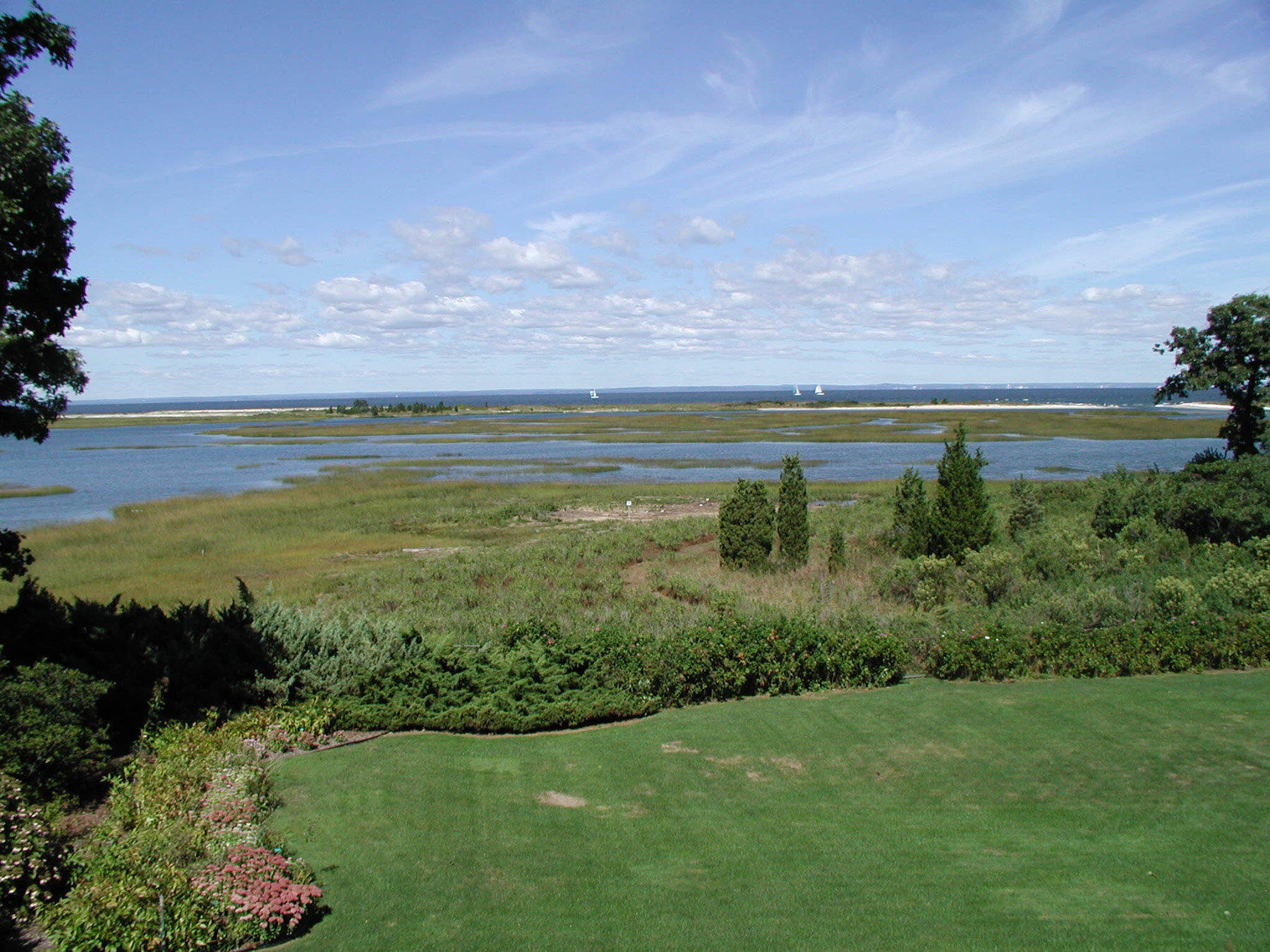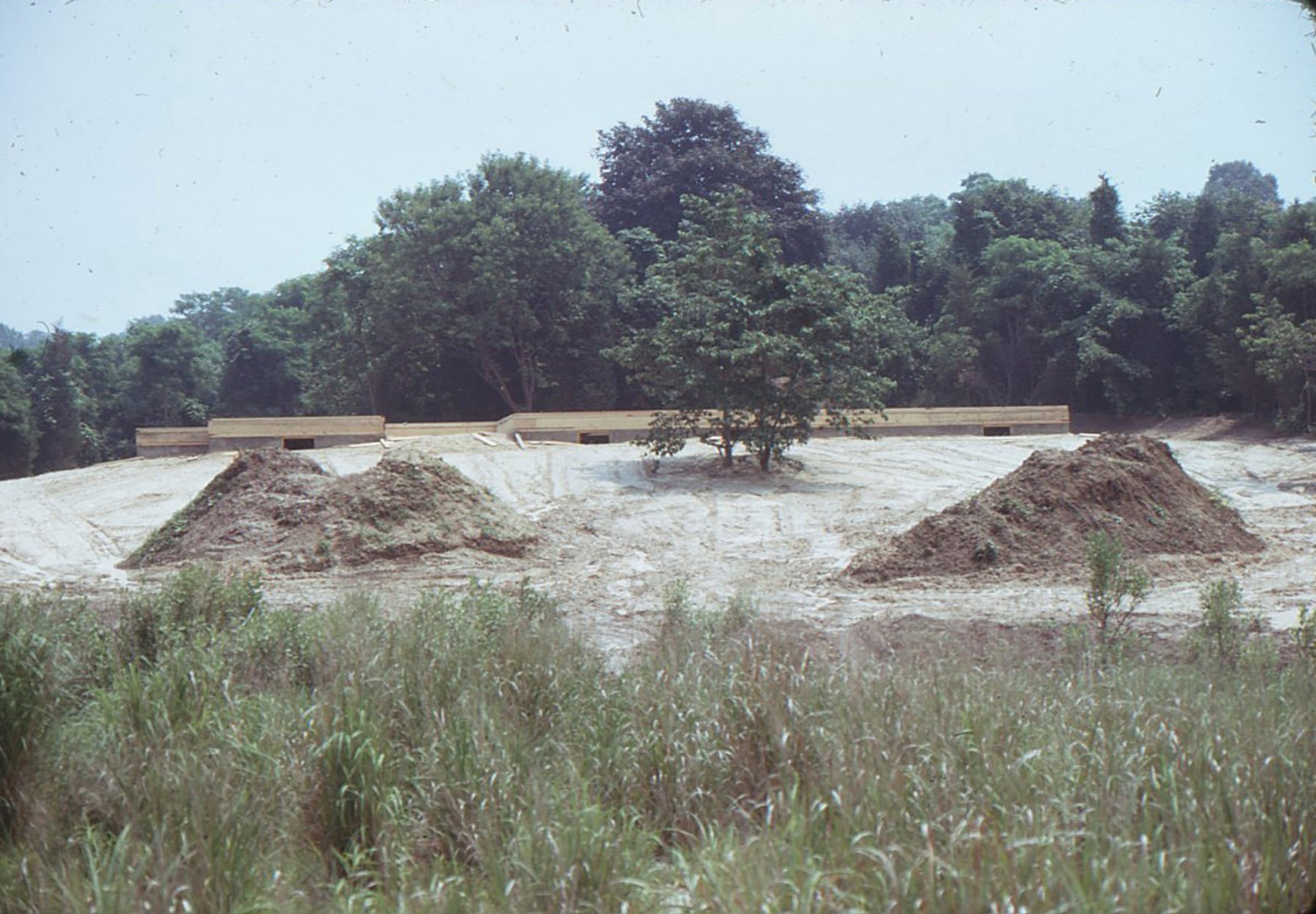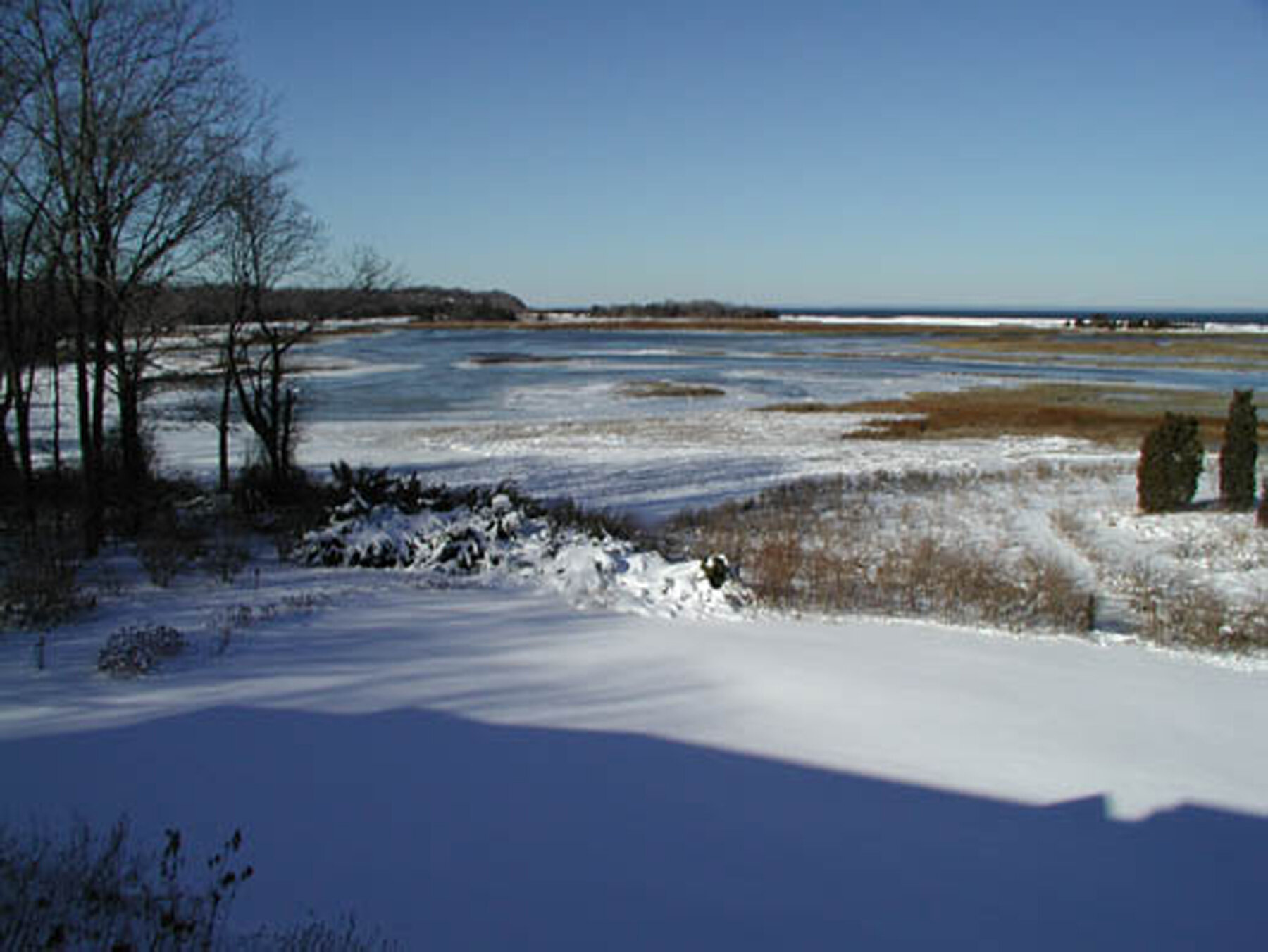NY Garden where we started
View from the house In Old Field, Long Island, NY, looking across the lawn over Flax Pond, a tidal estuarine marsh, toward Long Island Sound with sail boats. A beautiful summer day!
Photos 1972: creating the driveway from Shore Drive to the house (left two) and the house foundations done (right)
Before arriving in Canberra we gardened for thirty years on the north shore of Long Island, about 50 miles from New York City. Our block was two acres in size, situated on Flax Pond, a tidal estuarine marsh, about 27 acres in area, owned by Stony Brook University and used for research. This pond had been a freshwater pond used in the 1800s for retting flax, hence the name, Flax Pond. The villagers of Old Field decided that they wanted to be able to fish for clams etc. in Flax Pond so they opened the pond to the sea, to Long Island Sound. This meant that we were lucky enough to have shore birds at the front of our property and woodland birds to the rear. Long Island is a terminal moraine for glaciers of the last Ice Age, so the soil was acid sand, with scarcely a rock or pebble included in it. We received about 50 inches of rainfall each year, some of it in the form of ice and snow, which prevented any gardening for six months of the year.
Spring garden showing azaleas, viburnum and lilacs with a view to the pond.
Similar view to that above in winter. There are no leaves on most of the trees.
The climate was cold in the winter, perhaps two months each year when the temperature did not rise above freezing at any time during the day, and very hot and humid in the summer. We began to garden with very little knowledge and learned from our mistakes. We took classes at the New York Botanical Garden, Planting Fields Arboretum and Old Westbury Gardens and began to learn more about plants and garden design. We were founding Fellows of the Garden Conservancy in America, a group started by Ben’s cousin, Frank Cabot, to preserve notable gardens in the US. The Garden Conservancy developed into the group which organizes open gardens across America. We also visited many notable gardens in America, both private and public, with the Fellows Tours.
Azaleas and rhododendrons in full bloom in the spring
The plants that we used in our garden design were, in the beginning, mostly exotic, azaleas, rhododendrons, viburnum, roses, lilac, foxgloves, daffodils, crocus, sedum and clematis. These plants have been developed over hundreds of years into reliable garden plants. They performed exactly as their labels advertised, grew to a certain height and width, flowered on cue and virtually never died. Our garden design got better over time and our last garden on Long Island was a triumph in my opinion. We learned to thoroughly prepare our garden beds with fertile soil and establish permanent borders. However, we soon ran out of room to plant new species.
Foxgloves and peonies make a great show in spring loving the sandy soil and ample rain
The garden prospered and gave great delight, but was limiting in some aspects. As we learned more we became interested in native plants of America and began to plant native azaleas and prairie plants in our garden. By the time we moved to Canberra we knew that a garden was very important to us and we were thrilled be able to purchase another two acre property that could be developed into a garden.
The side of the house facing the pond (and north) with hydrangeas in the front garden









